In many ways, I’m happy with how far our society has come in 2022. Even while there are things that were better in the past, if we merely travel back a few centuries, we may see that certain elements of everyday life were more appropriate in the past.
During the 19th century, “freak shows” were among the most popular attractions and were accepted as a normal aspect of American culture. In essence, they were traveling circuses that showcased peculiar people, such as bearded ladies and Siamese twins.
One of these “odd” ladies, Mary Ann Bevan, was dubbed the “Ugliest Woman in the World,” and her terrible demise and intriguing life narrative underscore why we should never forget her.

Persons have always been captivated by persons of other races or physical ability; but, regardless of the era we’re discussing, it is unethical to put them on display in public and profit from them.
While crowds flocked to view persons with abnormalities in the 19th century, it is unimaginable to do so in the present day. From the 1840s until the 1940s, “freak shows” were very popular, and profit-driven exploitation was not viewed as unethical.
Thus, it may not come as too much of a surprise that Mary Ann Bevan’s narrative begins at this particular moment. Mary Ann Webster was born in Plaistow, East London, United Kingdom, on December 20, 1874.
persons have always been captivated by persons of other races or physical ability; but, regardless of the era we’re discussing, it is unethical to put them on display in public and profit from them.
While crowds flocked to view persons with abnormalities in the 19th century, it is unimaginable to do so in the present day. From the 1840s until the 1940s, “freak shows” were very popular, and profit-driven exploitation was not viewed as unethical.
Thus, it may not come as too much of a surprise that Mary Ann Bevan’s narrative begins at this particular moment. Mary Ann Webster was born in Plaistow, East London, United Kingdom, on December 20, 1874.
At this period, having a large number of children in almost every working-class home was normal. Mary Ann Webster was raised similarly to her siblings despite being one of eight children, six of whom were boys.
Her brothers were given employment to help support the family once they reached maturity. But Mary Ann had other choices. In 1894, the gorgeous brunette completed her studies in medicine and began her career as a nurse. This was a promising period in her life, with a bright future ahead of her.
At this period, having a large number of children in almost every working-class home was normal. Mary Ann Webster was raised similarly to her siblings despite being one of eight children, six of whom were boys.
Her brothers were given employment to help support the family once they reached maturity. But Mary Ann had other choices. In 1894, the gorgeous brunette completed her studies in medicine and began her career as a nurse. This was a promising period in her life, with a bright future ahead of her.
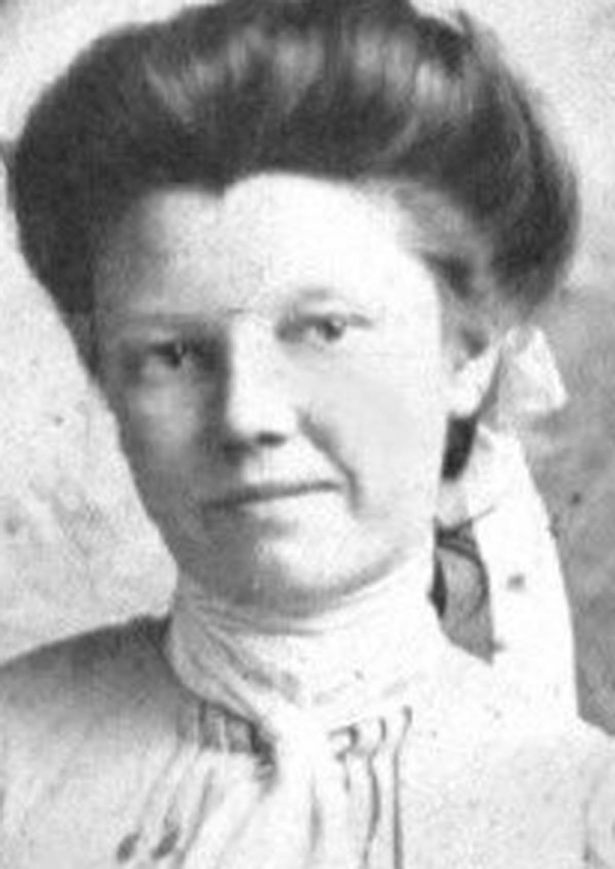
She was a pretty girl with soft features who attended school well and lived in London. This metropolis, which has prospered economically, has developed into the center of the modern world.
Mary Ann fell in love again when she wed Thomas Bevan in 1902. During their marriage, the couple had four children and seemed to be happy together. Unfortunately, though, the happy times wouldn’t last forever. After 14 years of dating, Thomas passed away from a stroke. In addition to being sad, Mary Ann was abandoned with her four children.
Regretfully, she was having more problems. She started having health issues shortly after she married Thomas, and as time passed, they progressively became worse.
Mary Ann was approximately thirty-two when she started to show signs of acromegaly. She must have been shocked when the first symptoms showed up, and regrettably, it wasn’t easy to find treatment for the rare ailment.
At the time, acromegaly was an obscure disease with limited information available to clinicians on its treatment. Acromegaly is a disease in which the body overproduces growth hormones, leading to enlarged bones and body tissue. It’s a terrible ailment that often results in the affected person’s hands and feet growing to three times their usual size.
Mary Ann Bevan’s sickness appeared later in life and affected her face, unlike how it often does after puberty. The longer she battled the illness, the more masculine and wide her features became.
Regarding the sickness, we know a great deal more today. For example, we know that six persons out of every 100,000 might be affected. The issue can also be resolved if it is identified promptly. For example, people with acromegaly today will have the same life expectancy as the general population if they receive the appropriate therapy from the outset.
Sadly, Mary Ann Bevan would not benefit from these advances in medicine. Rather, the illness had a detrimental psychological and financial effect on her.
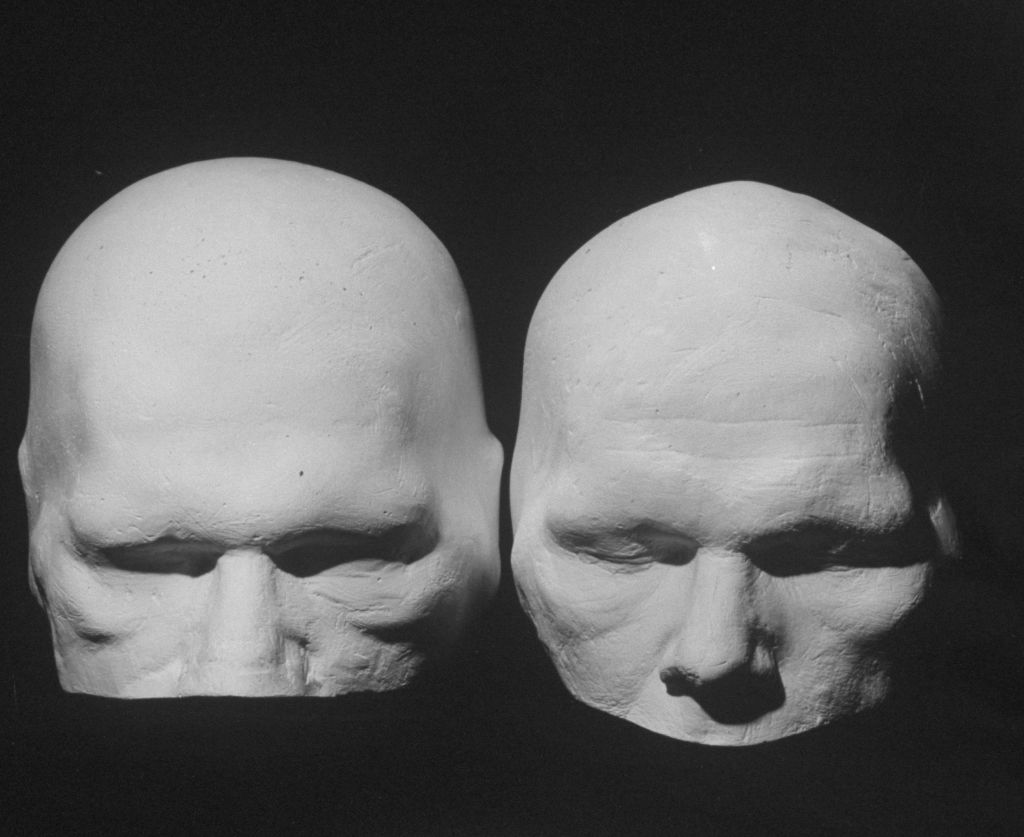
When she was married to Thomas, things weren’t too horrible. Mary Ann was given some criticism, but her family helped her and she was able to find comfort in her spouse.
However, after Thomas’s death, circumstances deteriorated and Mary Ann struggled to provide for her children. Her entire body had been impacted by the sickness, which had drastically changed the way she looked. She changed from a stunning young mother to a depressed, unrecognizably unrecognizable widow in a couple of years.
Because of her altered look, no one was interested in hiring her anymore. When they saw Mary Ann’s large face, many of her employers were alarmed and didn’t want an attention-grabbing disfigured lady working for them.
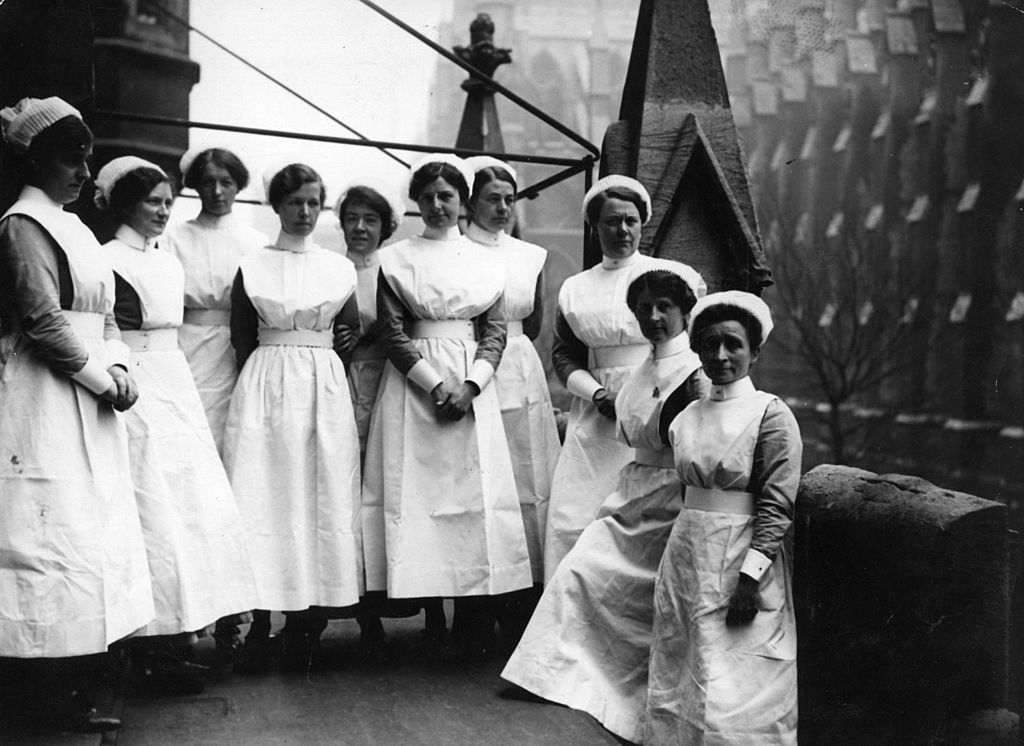
Then one day Mary Ann happened upon an ad in the newspaper that would change her life forever. The text of the commercial said:
The ugliest woman is wanted. Nothing hideous, mutilated, or deformed. Long-term commitment and good compensation are assured for the chosen candidate. Send a current picture.
The person in charge of the commercial was Claude Bartram. He worked as an agent for the American circus Barnum & Bailey. Mary Ann was drowning in debt and had no choice but to reply to the advertisement.
Her primary goal was to feed her beloved children; she wasn’t interested in being well-known or affluent. Mary Ann’s primary focus was becoming a mother.
Mary Ann sent in a picture of herself, and Bartram got in touch with her. The public later grew familiar with her pictures.

But Bartram saw more than what others would have, including the terrifying picture of a big lady. There were subtle differences in Mary Ann’s appearance and mannerisms.
She wasn’t at all disgusting. Her face was typical of a giant; it had a strong, masculine jaw, broad cheekbones, a large nose, and a forehead, yet she was flawless, robust, and healthy. Bartram subsequently said, “She told me she was shy and did not want to be separated from her children. She did not like the idea of placing herself on exhibition.”
“I promised her that she would receive £10 a week for a year, along with all of the proceeds from the sale of her picture postcards, so she could support her children’s education.”
But Bartram saw something more in that image, whereas many others just saw a frightening portrait of a huge lady. Unnoticed elements of Mary Ann’s personality and features were present.

Mary Ann was already well-known when she landed in New York after crossing the Atlantic by boat in 1920. Known as “The Ugliest Woman on Earth,” Mary Ann was highlighted on the front cover of almost all New York newspapers.
Successful Missouri showman Samuel Gumpertz controlled the Coney Island Circus, where Mary Ann would go on to become a major phenomenon.
Against bearded women, conjoined twins, and other people with a variety of physical disabilities, the English newcomer performed better than her fellow circus performers, and Mary Ann rose to prominence.
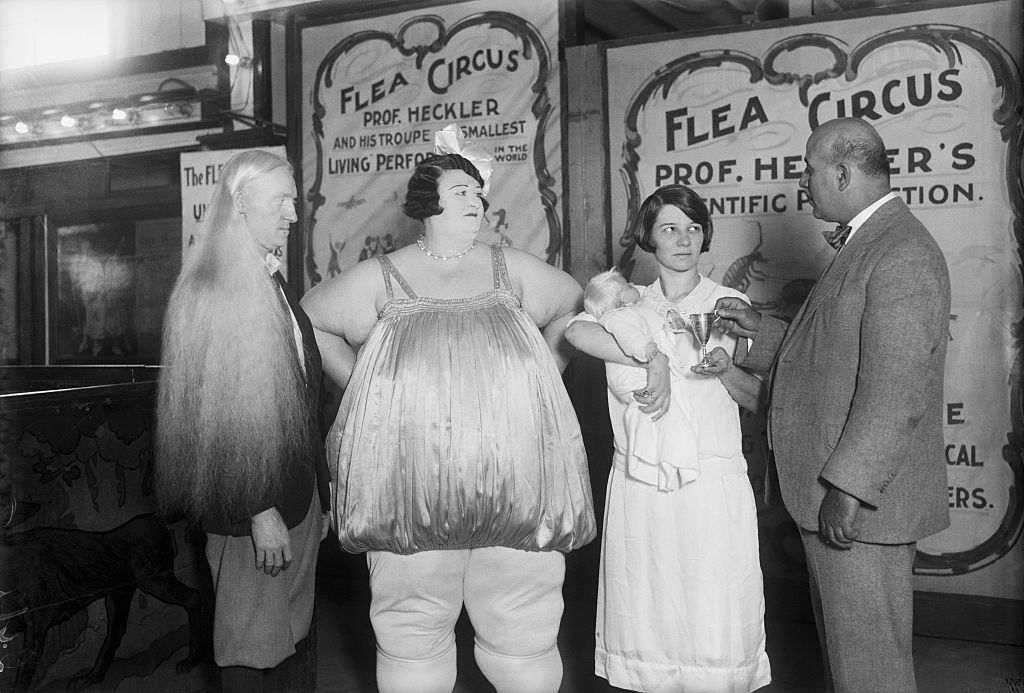
Some people, however, objected to the unethical use of circus performers as props. Many were strongly opposed to exploiting the disabilities of freak show performers for commercial advantage, even in the 19th century. Renowned neurosurgeon Harvey Cushing stepped in and ordered them to leave Mary Ann alone.
“The story of this sad woman who sits in Ringling Brothers’ sideshow ‘between Fat Lady and Armless Wonder’ and ‘affects white lace caps, woolen mittens, and high laced shoes’ is everything but amusing.
He said in a letter to Time magazine, “She, once a vigorous and good-looking young woman, has become the victim of a disease known as acromegaly.”
But the circus kept drawing in average people, and the directors made a fortune. Mary Ann, sadly, had her hands full in New York. She was told to dress more like a man to make herself seem less feminine and desirable. She also had to put up with jokes and comments, which made her feel less valuable.
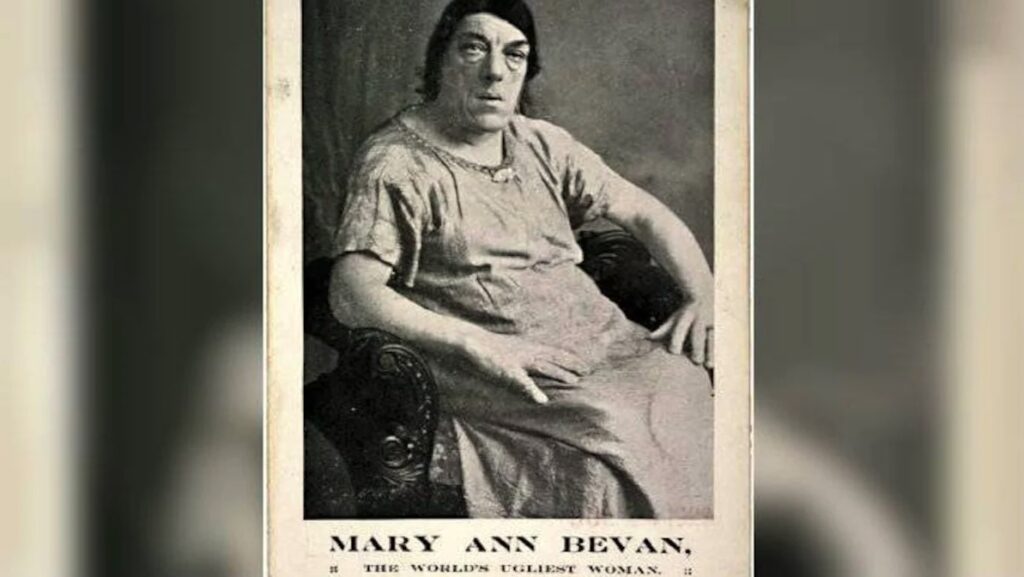
But there was an advantage that convinced her it was worth it. According to the Daily Star, Mary Ann reportedly made about $590,000 working with the circus. She had a lot of expertise, but she was also quite affluent. She even put up a robotic smile while offering to sell photo postcards of herself.
Mary Ann used the money to enroll her four children in an English boarding school. Leaving her kids behind on a different continent is surely a mother’s worst nightmare, but Mary Ann had no choice but to do so to provide her kids with a better future.
sacrificing oneself Mary Ann showed us what it means to be truly beautiful by giving your all for the people you love.
She lived in New York and worked in the Coney Island Dreamland Show for the remainder of her life, returning to France in 1925 for an exhibition.
In 1933, Mary Ann died of natural causes. Mary Ann was 59 when she passed away, and her children honored her final request to be buried in her home nation. She is currently buried in Ladywell and Brockley Cemetery in South London.

Though I’m not sure about you, I think Mary Ann is worthy. Her story shows how determined she was to support her family no matter what. Since there were no benefits like there are now, she was forced to work. She was a mother who put the needs of others above her own and truly loved her kids.
Mary Ann, you deserve to rest in peace.

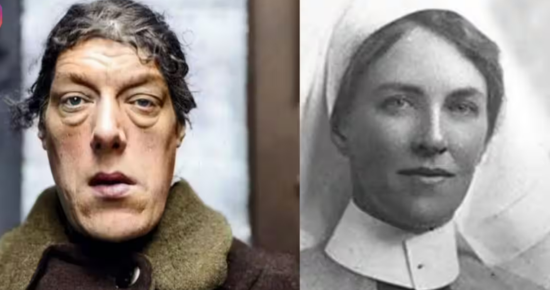
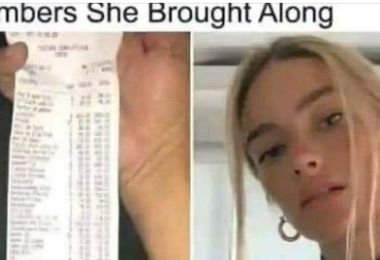
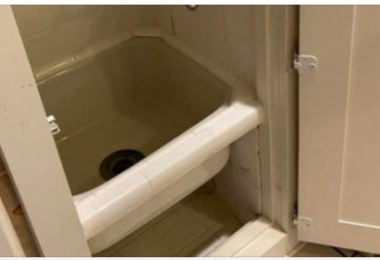


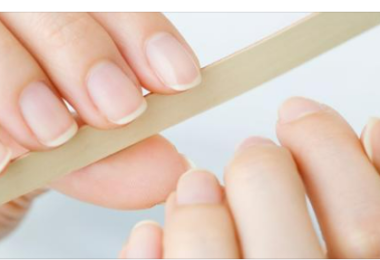

Leave a Comment